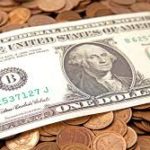 Investors bought USD after retail sales rose for the third month in a row. The increase in demand was widely anticipated, but the increase in overall spending along with spending excluding autos beat expectations. This means that while higher prices certainly played a role in the gains, consumers were not discouraged by price hikes to spend more on electronics, sporting goods, books and musical instruments. Spending at clothing stores declined modestly from the earlier month, but that will change in November and December with holiday shopping. Economists expect a strong holiday season with many retailers starting sales extra early this year in anticipation of shipping delays.
Investors bought USD after retail sales rose for the third month in a row. The increase in demand was widely anticipated, but the increase in overall spending along with spending excluding autos beat expectations. This means that while higher prices certainly played a role in the gains, consumers were not discouraged by price hikes to spend more on electronics, sporting goods, books and musical instruments. Spending at clothing stores declined modestly from the earlier month, but that will change in November and December with holiday shopping. Economists expect a strong holiday season with many retailers starting sales extra early this year in anticipation of shipping delays.
The strong US retail sales report drove EUR/USD to fresh 16 month lows and USD/JPY within a few pips of 4 year highs. With healthy consumer spending, inflation at a 30 year high and Fannie Mae and Freddie Mac preparing to support loans of just under USD one million, up from USD 650,000, the Federal Reserve needs to start planning for interest rate hikes. With that said, 2022 is the earliest we will see a move which is why stocks were free to rise. This latest retail sales report should keep the dollar bid for the rest of the week. USD/JPY in particular has its eye on 115.
Inflation is the main focus on Wednesday with data expected from the UK, Canada and Eurozone. The best performing currency on Tuesday was GBP which traded higher against all of the major currencies. While its gains were modest against the greenback, GBP rose strongly versus EUR, JPY, CHF and the commodity currencies.
UK labor market numbers were much stronger than expected with the economy adding 247,000 jobs in August, up from 235,000. Economists anticipated job growth to slow. The unemployment rate dropped to 4.3%, its lowest level in more than year. UK policymakers have expressed concerns about strong price growth which means CPI should be hot on Wednesday. The Bank of England is at the cusp of raising interest rates and good data combined with the prospect of tightening should drive EUR/GBP to 18 month lows.
Oil prices are back above USD80 a barrel but demand for USD made it difficult for the Canadian CAD to rally. However, with inflation numbers due for release, analysts are still looking for CAD to extend its gains particularly versus EUR, JPY, CAF, AUD and NZD. The latest IVEY PMI report shows manufacturing firms reporting very sharp rise in prices and this wholesale price pressure is expected to filter down to CPI. The market is pricing in an early 2022 rate hike by the Bank of Canada so a strong report should renew demand for CAD.
EUR/USD sold off for the fifth consecutive trading day. Tomorrow’s CPI report is final figures so the impact may not be significant. With COVID-19 cases hitting record highs, Germany and Austria imposed restrictions on unvaccinated people. Only 68% of the German population is fully vaccinated and now anyone unvaccinated or has not recently recovered from COVID will be banned from entering restaurants, cinemas and sports facilities. Austria has taken a tougher stance, permitting unvaccinated to only leave their homes for work, food shopping and emergencies. The ECB has made their position against tightening in the current environment very clear and the EUR/USD’s decline reflects their guidance.
The AUD and NZD also traded sharply lower. Like the ECB, rate hikes are not on the Reserve Bank of Australia’s mind. According to RBA Governor Lowe, rising house prices and 2.5% inflation would not be enough to hike rates. They don’t see rates rising in 2022 despite inflationary pressures.